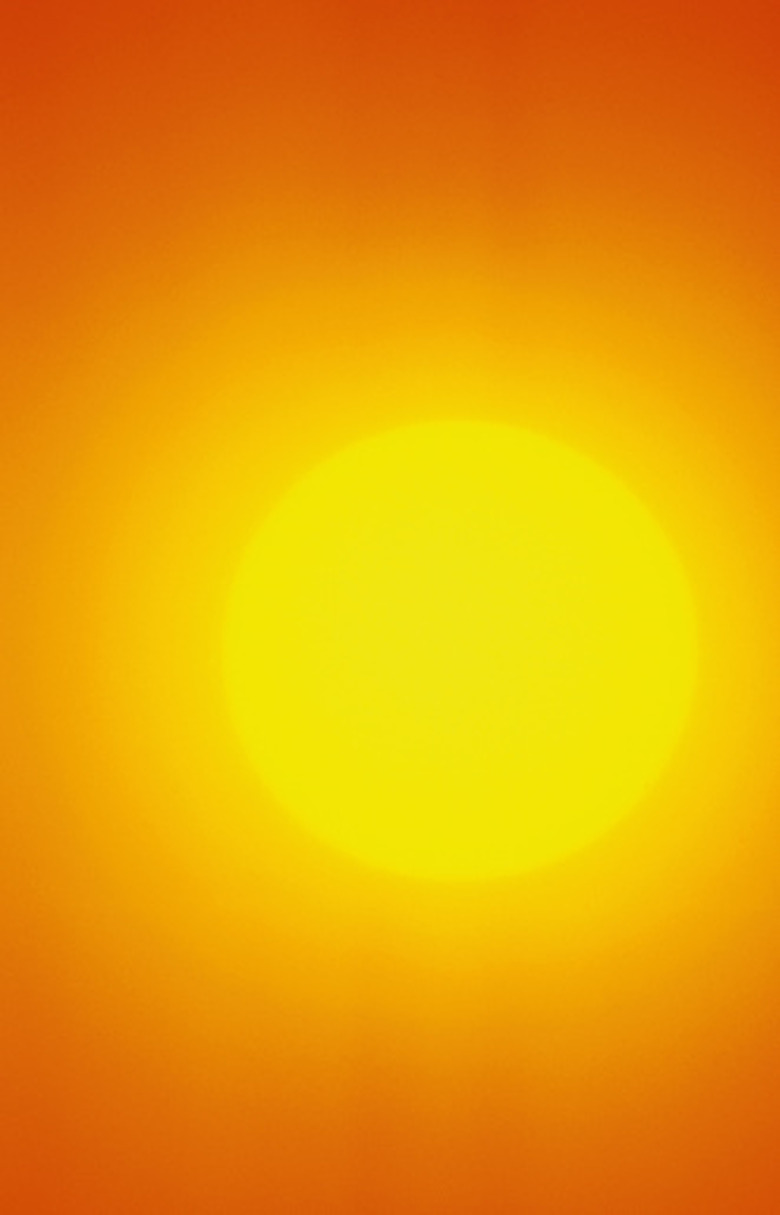Rotation & Revolution Of Planets Lab
The planets of our solar system all rotate on their axes and revolve in an orbital path around the sun. The sun has enough gravity to influence the mass and momentum of the planetary bodies. Even the moons of a planet have their own rotational energy, and they remain fixed in orbit around their parent planets because of gravitation pull. Rotation and revolution take place because of gravity, centrifugal and angular momentum, and it has been going since the planets were formed. Lab activities can demonstrate the forces and behavior of planetary rotation and revolution.
Planet Origin
Planet Origin
Planet origin and formation is important because rotation and orbital behavior evolved when the planets took shape, gaining surface mass and weight. The planets began as an accumulation and collapse of dense interstellar clouds of gas and materials on the atomic level. The accretion of materials formed small planetoids out of spinning ring material. The larger the mass became, the greater the gravity and the more material the proto-planets captured.
Planet Formation
Planet Formation
The sun was formed by gathering the most interstellar dust and gases, which started a nuclear chain reaction. It formed into a star, a self-sustaining nuclear dynamo of immense gravity. The planets took on the shape of spheroids because their inner cores attracted and captured material from all directions. At some point, the planets reached critical mass and remained that way. Some solid body planets took shape while other masses formed into spherical gas giants.
Momentum
Momentum
The accretion disks of gases and material that made up the planets began with a slow rotation energy. As they gained mass, their rotational speed increased dramatically and gradually became faster as billions of years passed. As they rotated, they fell under the influence of the sun's overwhelming gravitational pull. In addition, material that was not captured by the planets remained in orbit around them because of angular momentum and gravitation pull. These smaller masses became moons. In a sense, the moons orbit around the sun like the planets but only because of their attraction and gravitational lock with their parent planets.
A System of Orbital Order
A System of Orbital Order
The planets all revolve around the sun in a systematic order in the same general direction and plane, except for perturbations and small fluctuations. Neptune, Jupiter, Uranus and Saturn spin faster on their axes because they contain most of the solar system's angular momentum. The sun makes one rotation once a month while the rotation of the planets about their axes varies. Venus and Uranus rotate around their axes in the opposite direction, contrary to the other planets. The reverse rotation of Venus and Uranus has been attributed to collisions late in their formation.
Lab Procedure -- Revolution and Rotation
Lab Procedure — Revolution and Rotation
Four students can be placed back to back in a circle, holding flashlights pointing outward. The outward shining light represents the sun. The rest of the students can form an outer circle around the sun at different distances. The students can walk around the which demonstrates revolution. Having the student turn in a circle while walking around the sun will show the meaning of rotation.
Lab Procedure -- Combined Revolution and Rotation
Lab Procedure — Combined Revolution and Rotation
A pair of students can represent the Earth and the moon. The Earth can remain fixed and rotate while the moon revolves around the Earth. When both students move around the sun, it demonstrates two bodies in revolution, even though they are independent of each other. The result is a combined revolution and rotation of a parent body and moon. A discussion can be raised about the same behavior with the largest planets, Saturn and Jupiter, which have multiple moons.
Lab Procedure -- Light Reflection
Lab Procedure — Light Reflection
Demonstrate that the light, represented by four students as in Section 5, shines outward to strike the face of the revolving planets, but that as the planets rotate, only a portion of their spheres receive direct light for a specific amount of time. The planet's surface receiving the sunlight is known as "day." Also, if all the flashlights that represent the sun are turned off, it shows that the planets are truly illuminated by the sun and do not have an internal light source.
Lab Procedure -- Axis and Movement
Lab Procedure — Axis and Movement
By tilting an inflatable globe approximately 23.5 degrees, it can be shown to students that the Earth does not rotate about its axis in a straight up and down fashion. The tilt of the Earth makes the seasons possible. An explanation can be given for each of the other planets, which have tilts that are all different. When all of the students move around the sun while turning slowly around, it shows that all of the planets remain in constant movement all the time. None of the planets or moons remain stationary, except for the sun.
Cite This Article
MLA
Stevenson, Chris. "Rotation & Revolution Of Planets Lab" sciencing.com, https://www.sciencing.com/rotation-revolution-planets-lab-8626975/. 24 April 2017.
APA
Stevenson, Chris. (2017, April 24). Rotation & Revolution Of Planets Lab. sciencing.com. Retrieved from https://www.sciencing.com/rotation-revolution-planets-lab-8626975/
Chicago
Stevenson, Chris. Rotation & Revolution Of Planets Lab last modified March 24, 2022. https://www.sciencing.com/rotation-revolution-planets-lab-8626975/
